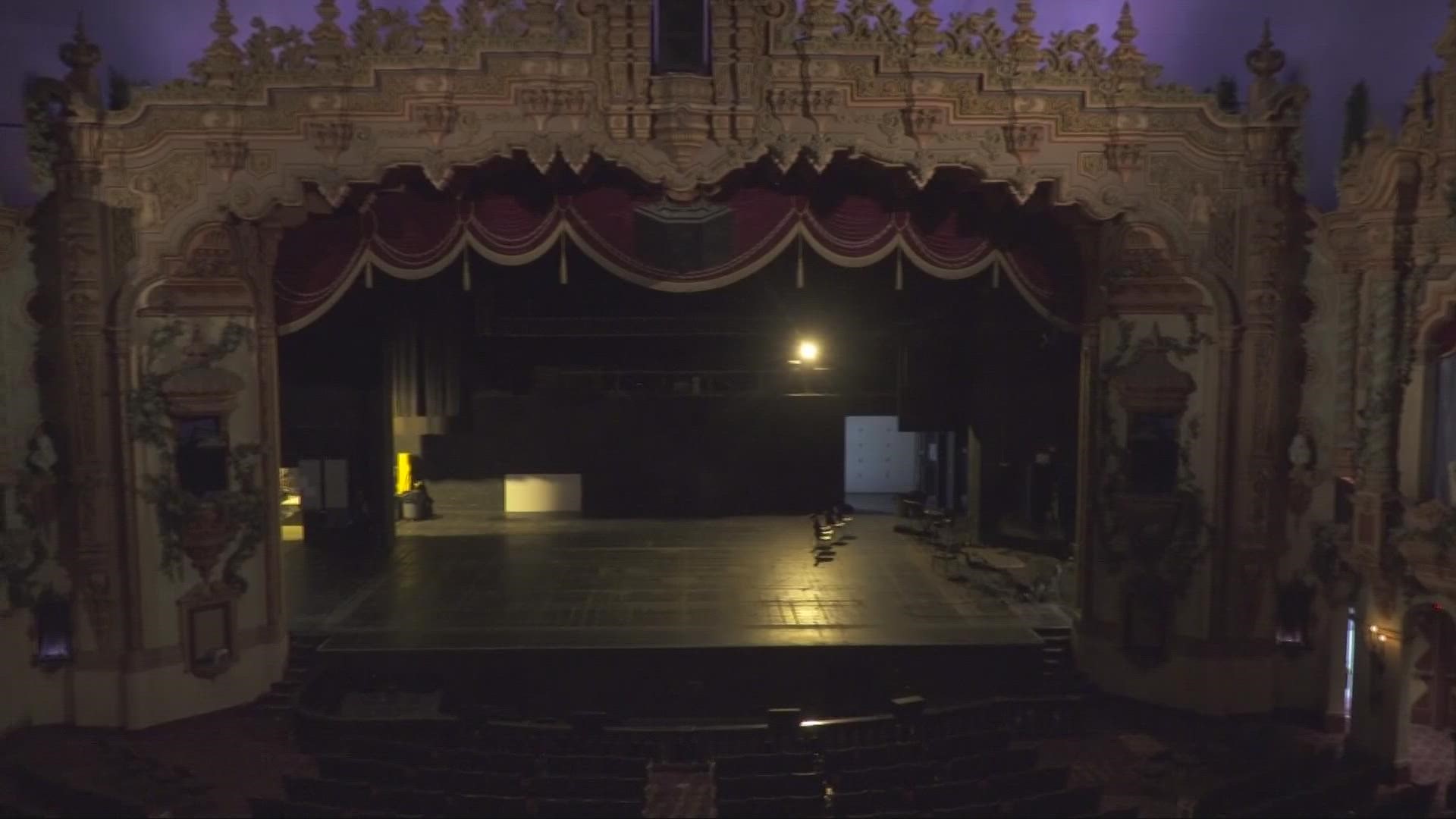AKRON, Ohio — On South Main Street in Akron, a marquee and sign reading “Civic” tip off visitors to the Akron Civic Theatre, a performance space that first opened doors in downtown Akron in April of 1929. But what the sign doesn’t necessarily give away is the grandeur inside, where three performance spaces and a grand lobby tell stories of decades past.
The theatre, built by Marcus Loew and designed by John Eberson, also known as “Opera House Johnny,” served as a getaway for early patrons. Not only could theatre-goers of days past pay five cents to view a movie and vaudeville show, but they could also escape the elements, taking refuge in one of Akron’s first air-conditioned buildings.
Executive Director Howard Parr explained how the building was designed to make visitors feel as if they were outside, while inside.
“It’s just such a beautiful place, it was an escape, and the whole idea was that you were to feel that you were outside while you were inside. So everything that you see - stars and you see clouds in the main theatre, the roof even here where we're sitting is an arbor of leaves,” Parr said. “So the idea was that you were out in a Moorish garden, even though you were inside.”
In the main auditorium, clouds move and stars sparkle in a fiber optic sky, and ornate plaster moldings, with climbing vines and sculpted mermaids, frame the stage. Two thousand five hundred people can sit among the tiers of red velvet chairs and watch events.
“You cannot replace live entertainment. The energy that comes from a concert, the emotions that come from a play, you can't replace that,” said Valerie Renner, associate director overseeing programming and media relations. “I always believe that if you start your children young in the theater, they will grow old with the theater. So it's really important. The arts are so important in our community.”
While the auditorium may be the main event, Renner knows the grand lobby is also something to marvel at. The lobby, where guests pass through before entering the main performance space, features soaring, ornate ceilings, more climbing reliefs and sculptures, and vibrant sculptures and colored glass windows.
“He would travel Europe and make these amazing opera houses,” said Renner of designer John Eberson. “In fact, the French Opera House was one of them, and our grand staircase is a smaller scale of what is in France.”
Throughout the theatre, there are also nods to Loretta, one of two parrots who used to fly freely throughout the building when it first opened. Now, she is memorialized as a piece of the theatre’s history, featured in the pattern in the carpeting, in paintings and carvings in the grand lobby, and she even lives on in a taxidermy version perched high upon a wall.
Inside, there have been efforts to preserve the building’s art, history, and architecture, while on the outside, there have been new projects to beautify and highlight its brick walls. Murals, public art, and a digital screen now mark the outside of the building.
The theatre may be known for the artists who visit and the productions staged, but Parr and Renner also understand the sentimental ties many in the community have to the space.
“If you're from Akron, then you have a very, very deeply felt, sort of intrinsic connection to the building,” Parr said, recalling the times people have told him they had their first kiss in the balcony, or remember seeing the Nutcracker there as a child.
Renner, who grew up in Akron, knows the connection well.
“It had such a magical effect on me as a child. And just to do this, to preserve it for the next generations, means so much,” she said. “I've told many people that we're the keepers of the memories here, and we try our best to keep creating those memories for many generations hopefully to come.”
The theatre, which is a non-profit, has been continuously running since it opened in 1929. However, Parr said the nearly 100 years in business have not come without challenges, describing a period from about 1965 into the nineties and early 2000s when the theatre was “always on edge” from a financial standpoint.
Today, however, Parr said the theatre has reached a point of stability, growing in recent years. There was a campaign and revitalization effort in 2002. During the pandemic, the theatre was also in the midst of a capital campaign project, adding spaces and partnerships to the theatre’s repertoire.
Now, the downtown theatre space is more of a “campus,” according to Parr. In addition to the main auditorium, there is also the Knight Stage, which is about a 200-capacity club-style space, and a 45-person micro performance space called Wild Oscar’s.
Parr said they also work with the Goodyear Theater in Akron and with the University of Akron’s E.J. Thomas Performing Arts Hall.
“We've launched a platform, we call it Live Akron, we launched it in August,” Parr said. “It's E.J. Thomas Hall at the University of Akron, it's the Goodyear Theater in East End Akron, it's the Akron Civic Theatre and the venues that are here, and Lock 3. So it's all of those venues under one umbrella that we're calling Live Akron.”
From the theatre’s history to the programs and performances that have sprung out of it, to the memories many have tied up in the building, Parr called the theatre a “destination.”
“We view ourselves as much as a community development or economic development organization as we do an arts organization,” Parr said. “So our role is really to be active and to bring people into downtown Akron."
More from Isabel Lawrence:

